A New Era of Urgency
Moments of genuine urgency are rare in Canadian defence policy. For decades, the Canadian Armed Forces (CAF) have walked a fine line between meeting global security expectations and maintaining domestic political restraint. That balance is shifting. On June 9, 2025, Prime Minister Mark Carney announced a CAD 9 billion increase in defence spending, putting Canada five years ahead of schedule for NATO’s 2% of GDP benchmark.
This was more than an accounting exercise. It was a clear signal — to allies and adversaries alike — that Canada wants to play a larger and more credible role in collective defence. Carney’s message was clear: “Now is the time to act with urgency, force and determination.” The statement acknowledged that the luxury of gradualism was over. Strategic competition is intensifying, the Arctic is becoming a competitive military space, and the United States is seeking capabilities The important reliance on states is no longer politically or strategically sustainable.
Tensions with the United States
The June announcement came against a backdrop of rising US-Canada economic tensions. In late July 2025, Washington raised tariffs on most Canadian goods to 35%, escalating an already fraught trade dispute. The economic downturn has also spilled over into the defence sector, with American voices once again accusing Canada of “free-riding” on US security guarantees.
Carney’s decision to meet NATO spending targets early was, in part, a counter-narrative to these accusations. Yet despite the political friction, operational realities mean that interdependence is inevitable. This was underscored by the defence review of August 7, 2025, which recommended that Canada maintain its full order for 88 F-35A Lightning II fighters from Lockheed Martin. The logic is straightforward Was: Leaving the NATO program would be risky. Interoperability would be broken, sustainability would be complicated, and the CF-18 replacement schedule would be delayed – all at increased cost.
The review’s conclusion reflects a delicate balancing act in Ottawa’s strategy:
- Preserve key US-linked capabilities where they provide clear operational advantages and alliance integration
- Diversify procurement in other areas to strengthen industrial sovereignty and reduce supply-chain vulnerability
The Arctic: Canada’s strategic frontier
If there is one theatre shaping Ottawa’s current defence priorities, it is the Arctic. The region is no longer a distant buffer but the front line of strategic competition.
Russia has invested heavily in the militarization of its northern coastline – reactivating Cold War-era bases, expanding its air defence network and expanding its Arctic capabilities, including ice-capable submarines Increasing the naval fleet. China, which calls itself the “closest state to the Arctic,” has expanded polar research stations, icebreaker programs, and shipping ventures, all with clear dual-use capabilities.
Canada’s response is based on two strategic imperatives:
- Look: Deploy Over-the-Horizon Radar (OTHR) as part of the NORAD modernization, in partnership with Australia’s JORN program. These radar systems will provide continuous surveillance over thousands of kilometers, detecting both air and… sea-based threats from afar. Beyond the curvature of the Earth.
- Reach: Ensure that the CAF can move capable forces quickly into the Arctic and sustain them for long periods. This requires ice-capable ships, long-range patrol aircraft, drones, expeditionary logistics, and a strong northern base.
- Canadian Coast Guard Service icebreaker, CCGS Des Groseilliers, breaking sea ice in Franklin Sound, Nunavut, Canada
Current operations and assets
Harry DeWolf-class Arctic and Offshore Patrol Ships (AOPS) are central to Canada’s sovereignty operations in the North.
- Strengths: Ice-strengthened hulls, months-long endurance, helicopter embarkation capability, and modular payload space make them ideal for presence missions, search and rescue, and police duties.
- Limitations: Lack of light weapons and advanced combat systems limits their deterrent value against peer-state threats.
Infrastructure and Readiness
Arctic Defence It’s not just about platforms. Without adequate infrastructure – deep-water ports, fuel depots, ammunition storage and repair facilities – even the most capable ships and aircraft will struggle to operate effectively. Currently, Canada’s northern basing network is limited, a gap that adversaries will exploit if not addressed.
Royal Canadian Navy: Renovation underway
The Royal Canadian Navy (RCN) is at the heart of Ottawa’s modernization agenda, undergoing its most extensive renovation since the Cold War.
Current core capabilities
- Halifax-class frigates (12): Modernized with upgraded radar, electronic warfare systems and battle management software. These versatile escorts excel in anti-submarine warfare (ASW) and general purpose roles but are constrained by limited air defense capabilities and aging hulls.
- Harry DeWolf-class AOPS: Expanding Canada’s presence in the Arctic and its coastal areas. While valuable for constabulary and sovereignty missions, their light weapons limit combat utility.
- Joint Support Ship (Protector Class) Program: Transition from older replenishment ships to modern platforms with refueling at sea, sealift capability, and limited self-defense weapons.
- Victoria-class submarines: Diesel-electric boats providing covert surveillance and ASW capabilities. Endurance and availability are hampered by age and the constraints of operating in Arctic conditions.
Major modernization programs
- Canadian Surface Combatant (CSC) – River Class: Fifteen advanced warships based on the Type 26 design will replace the Halifax-class and retired Iroquois destroyers. Features include:
- Optimized ASW hull and propulsion for quiet operation
- Advanced towed array sonar systems
- Mk 41 vertical launch systems for surface-to-air and surface-to-surface missiles
- Flexible mission bay for unmanned systems and modular payloads
- Embarked CH-148 Cyclone helicopter for extended ASW reach
- Joint Support Ship (JSS): Two Protector-class ships will restore global sustainability capabilities, allowing the Canadian Task Group to operate independently for extended periods of time.
- Canadian Patrol Submarine Project (CPSP): The Victoria-class will be replaced by ice-free, long-range submarines. The first units are not expected until the mid- to late 2030s, creating a long gap in capabilities.
- The Sikorsky CH-148 Cyclone is a twin-engine, multi-role shipborne helicopter developed by Sikorsky Aircraft Corporation for the Canadian Armed Forces. Based on the civilian Sikorsky S-92 platform, the CH-148 was purpose-built for maritime operations, serving as the successor to the CH-124 Sea King, which was in service from 1963 until its retirement in 2018.
Strategic Impact and Drawbacks
The modernization of the RCN will provide:
- Blue-water Task Group Capability capable of global deployment with independent maintenance
- Increased Arctic operations through **ice-capable surface ships and ice-capable submarines (post-2030)
- Improved interoperability with NATO navies through common systems and weapons
However, risks remain:
- Submarine availability gap until CPSP delivery
- Arctic infrastructure — ports, repair and resupply facilities — still lagging behind operational ambitions
- Air defence limitations until the CSC fleet is strengthened
Royal Canadian Air Force: Completing the Transition
The Royal Canadian Air Force (RCAF) is facing a high-stakes transition from a legacy platform to a modern system that will serve NORAD and NATO Both are capable of fulfilling commitments.
Current Core Capabilities
- CF-18 Hornet (CF-188): Lifetime extension through the Hornet Extension Project, still serving in air sovereignty and expeditionary roles.
- CP-140 Aurora: Multi-mission maritime patrol aircraft with ASW capabilities, nearing end of service by 2030.
- CH-148 Cyclone helicopter: Rides aboard naval ships for ASW and surface surveillance.
- CH-147F Chinook: Heavy-lift helicopter for tactical mobility.
- CC-130J Hercules and CC-177 Globemaster III: Provide tactical and strategic airlift.
- CH-146 Griffon: Multi-role utility helicopter under a limited life extension program to remain operational until the 2030s.
- Search and Rescue Assets: CC-295 Kingfisher and CH-149 Cormorant helicopters.
Modernization and Future Systems
- Military Systems: Improved personal protection, integrated communications, and enhanced night-vision devices.
- Ground-Based Air Defense (GBAD) and Counter-UAS: RBS 70 NG systems deployed with a NATO mission in Latvia provide short-range coverage; Canada has also donated NASAMS to Ukraine, highlighting local ranges.
- Electronic Warfare and Cyber at Brigade Level: Expanding the ability to operate in drone- and EW-contested environments.
- Unmanned Ground Vehicles (UGVs): Trials for autonomous logistics and reconnaissance support.
Capability Impacts and Shortcomings
The Army’s modernization aims to:
- Maintain a credible heavy/medium combined arms capability for NATO operations
- Improve survivability through integrated GBAD and counter-drone systems
- Enhance battlefield awareness with digitized C2 and modern sensors
Continued gaps include:
- No comprehensive level GBAD for local and expeditionary forces
- Limited long-range precision fire compared to allied adversaries
- Recruitment and maintenance deficiencies impacting deployable force strength
- The Canadian Army operates the German-designed vehicle, the Leopard 2 main battle tank (MBT). Canada has a fleet of Leopard 2s, including various upgraded variants such as the Leopard 2A4M CAN. The tank is vital to the Canadian Armed Forces and is expected to remain in service until at least 2035.
Cyber, Space and Integrated Defence
Modern warfare is inherently multi-domain, and Canada is investing in capabilities for the contested areas of cyberspace and space.
Cyber
**The establishment of the *Canadian Armed Forces Cyber Command (CAFCYBERCOM)* in 2024 formalizes the CAF’s authority to:
- Defensive cyber operations to protect military and national networks
- Mission assurance to counter adversarial cyber activity**
- Offensive cyber options within legal and policy constraints, coordinated with Five Eyes partners
Space
Prioritizations include:
- Secure satellite communications to ensure resilient C2 across Canada’s vast territory
- Space domain awareness to track and characterize objects in orbit
- ISR integration of space-based data with integrated sensors on the ground
Integrated C4ISR
The goal is to connect sensors and shooters across all domains:
- Over-the-horizon Radar (OTHR)** for early detection
- P-8A Poseidon and MQ-9B* for maritime and Arctic ISR
- CSC Combat Systems* for real-time targeting and engagement
Procurement timeline
2025–2027
- F-35A deliveries begin; Pilot and maintainer training increased
- Initial OTHR site development under NORAD modernization
- CC-330 MRTT conversion for first operational tankers completed
- Harry DeWolf-class AOPS and JSS entry into service continued delivery
- MQ-9B RPAS training infrastructure established
2028–2032
- P-8A delivery and CP-140 retirement
- OTHR achieves initial operational capability
- CSC construction accelerates, first ships delivered late in the decade
- Land-based air defense decisions implemented
2032–Late 2030s
- Full operational capability for F-35A fleet
- Serial production of CSC destroyers
- Canadian Patrol Submarine Project delivers first ice-capable submarine
Funding for transformation
**CAD 9 billion increase in the 2025-26 continuing funding plan is an initial step. Ottawa’s approach combines:
- Multi-year allocations for stability
- Industrial and Technology Benefits (ITBs) to develop domestic defence industries
- Phase payments to manage large procurement programs
- Joint cost-sharing for joint projects such as NORAD modernization
Economic risks include:
- Tariff-based trade tensions with the US reduce fiscal flexibility
- Inflationary pressures drive up procurement costs
- Labour shortages in shipbuilding and aerospace sectors slow deliveries
- The Royal Canadian Navy (RCN) currently operates a fleet of four Victoria-class submarines. This is a diesel-electric submarine that was originally built for the Royal Navy and acquired by Canada in the late 1990s.
Conclusion: From Declarations to Results
Canada’s modernization program is ambitious and long-term, representing a deliberate shift away from the gradualism that has defined its defence policy for decades. The vision is to create a Canadian Armed Forces (CAF) that is balanced across a range of domains, capable of operating independently in the Arctic, and capable of making meaningful contributions to NATO and allied missions abroad.
If fully realized by the early 2030s, the CAF will:
- Maintain integrated Arctic surveillance and rapid response using over-the-horizon radar, long-range patrol aircraft, crude systems, and a modern surface and subsurface fleet.
- Deploy a blue-water naval task group with its own replenishment and logistics, independent of allied independence.
- Operate multiple combat-ready F-35A squadrons integrated into allied C4ISR networks for both NORAD and NATO operations.
- Provide layered air and missile defense for local infrastructure, Arctic installations, and forward-deployed forces.
- Lead NATO battle groups with modern ground forces ready for high-intensity combat in a competitive environment.
These goals are strategically sound, but many ongoing challenges will be faced to achieve them.
Time horizon and capability gap
Many major programs – including the Canadian Patrol Submarine Project, the full Canadian Surface Combatant Fleet, and the national layered air defense network – will take a decade or more to reach operational maturity. This leaves a capability gap in which aging systems must be maintained beyond their optimal service life, increasing both costs and operational risk.
During this transition period:
- Canada will rely on allies for submarine patrols under the ice, long-range missile defense, and sustained Arctic air coverage.
- Adversaries, particularly Russia and China, will continue to expand their capabilities in this area, potentially outpacing Canada’s modernization timeline.
Political Will and Strategic Continuity
Canada’s defence procurement history is fraught with setbacks and delays – from the Sea King helicopter replacement to the drawn-out F-35 debate. Multi-decade programs are inherently vulnerable to changes in government and shifting fiscal priorities.
To avoid a repeat of this pattern, Ottawa will need:
- Cross-party consensus to protect key programs from partisan interference.
- Firm requirements discipline to prevent mid-program scope changes.
- Public engagement that directly links defence investment to sovereignty, Arctic security and industrial benefits.
Without this continuity, modernisation risks becoming a patchwork of partial deliveries
- HMCS Halifax (FFH 330). The Canadian Halifax-class frigates are a class of twelve multi-role patrol frigates in service with the Royal Canadian Navy. They were designed in the 1980s to replace ageing destroyer escorts and serve as the navy’s primary surface combatant, with a focus on anti-submarine and anti-air warfare capabilities.
Industrial Capacity and Economic Constraints
The success of the plan is tied to the capacity of Canada’s domestic defence industry. While the shipbuilding and aerospace sectors stand to benefit from major contracts, both face:
- Skilled labour shortages.
- Supply chain fragility for critical components.
- Inflationary pressures on materials and labour.
Despite pressure to diversify suppliers, Canada will remain dependent on U.S. sustainability pipelines for certain systems – a potential strategic vulnerability if trade disputes or tariffs escalate.
Fiscal Sustainability
A CAD 9 billion increase in 2025-26 is a strong start, but further spending will require either strong GDP growth or politically difficult redistribution. Historically, Canada has had little tolerance for high peacetime military spending. In an economic downturn or a protracted trade dispute with the United States, defence could once again be one of the first budget lines targeted for cuts.
Alliance Expectations and Burden-Sharing
Meeting NATO’s 2% benchmark ahead of schedule has bought Canada political capital, but it also raises expectations. Allies will now seek:
- Deployable Arctic and naval assets that can operate year-round in northern waters.
- A sustained contribution to NATO’s forward presence in Europe.
- Credible expeditionary capabilities beyond North America.
In NORAD, Washington sees a viable Canadian Arctic presence as a key requirement for continental defense. Failure to do so could lead to unilateral U.S. action in the North, effectively eroding Canadian sovereignty.
- Arctic Ranger training, Alert, Nunavut, 2010 — Canadian Rangers practice survival, navigation, and patrol skills in one of the world’s harshest environments.
Arctic competition and operational realities
The Arctic will be the true test of Canada’s modernization. Russia continues to invest heavily in Arctic-capable submarines, bombers, and coastal defense, while China is expanding its polar logistics and icebreaking fleet. Canada faces three key operational challenges:
- Infrastructure: Limited ports, runways, and fuel depots north of 60°N.
- Logistics: Harsh weather and vast distances slow deployment and resupply.
- Speed of response: Even with modern assets, rapid response relies on pre-positioned resources and trained personnel.
Comparative NATO context
Canada’s position among mid-level NATO forces is unique: few Allies have to defend such a vast, harsh climate and sparsely populated region while contributing to a global engagement mission. If modernization is successful, Canada could join a select group of allies with:
- Full-spectrum maritime capabilities, including under-ice patrols.
- Fifth-generation fighters integrated into allied networks.
- Independent sustainment capabilities for extended deployment.
Otherwise, it risks becoming dependent on others for a major bottleneck.
- A Canadian Forces helicopter lands during a simulated downed-aircraft response as part of the Arctic Search and Rescue Exercise (SAREX) in Fairbanks, Alaska, on October 31, 2013. The joint U.S.-Canadian exercise tests interoperability and coordination in Arctic SAR operations.
Strategic Outcomes
Success will depend on whether Canada can align political will, industrial implementation, and financial commitment over a decade. Two possible futures emerge:
- Full Success: A balanced, self-sufficient, Arctic-capable CAF by the mid-2030s, with modern ships, submarines, aircraft, and ground forces capable of operating independently and making proportionate contributions to NATO.
- Partial Delivery: Some capabilities realized, but gaps remain in submarines, Arctic infrastructure, and missile defense, leaving Canada dependent on allies for critical functions.
The modernization drive is not just about acquiring hardware—it’s about deciding what kind of military power Canada wants to be. The strategic choice is clear: either emerge as a credible, balanced, and sovereign protector of national interests, or remain dependent on allies whose ability to cover Canadian gaps will not survive in an increasingly competitive world.
Read More: Spain Rules Out F-35, Backs European Fighters in Strategic Shift
FAQs
Canada increased its defense budget by 9 billion Canadian dollars in June 2025 to meet NATO’s 2% target ahead of schedule. The move showed allies that Canada wants to be a strong partner in global security, especially in the Arctic and amid rising tensions with countries like Russia and China. It was also intended to address U.S. concerns that Canada is not investing enough in defense.
The Arctic is now a key focus for Canada. The government is investing in new radar systems, ice-capable ships, and a strong base in the North. The upgrades are intended to help Canada monitor its vast Arctic territory, move forces quickly, and protect sovereignty against Russia’s military buildup and China’s growing presence in the polar regions.
The Royal Canadian Air Force is replacing its aging CF-18 jets with 88 F-35A Lightning II fighters. These advanced jets will give Canada better security at home and allow for easier teamwork with NATO allies. They will also strengthen NORAD operations and ensure Canada can respond quickly to threats in the Arctic and beyond.
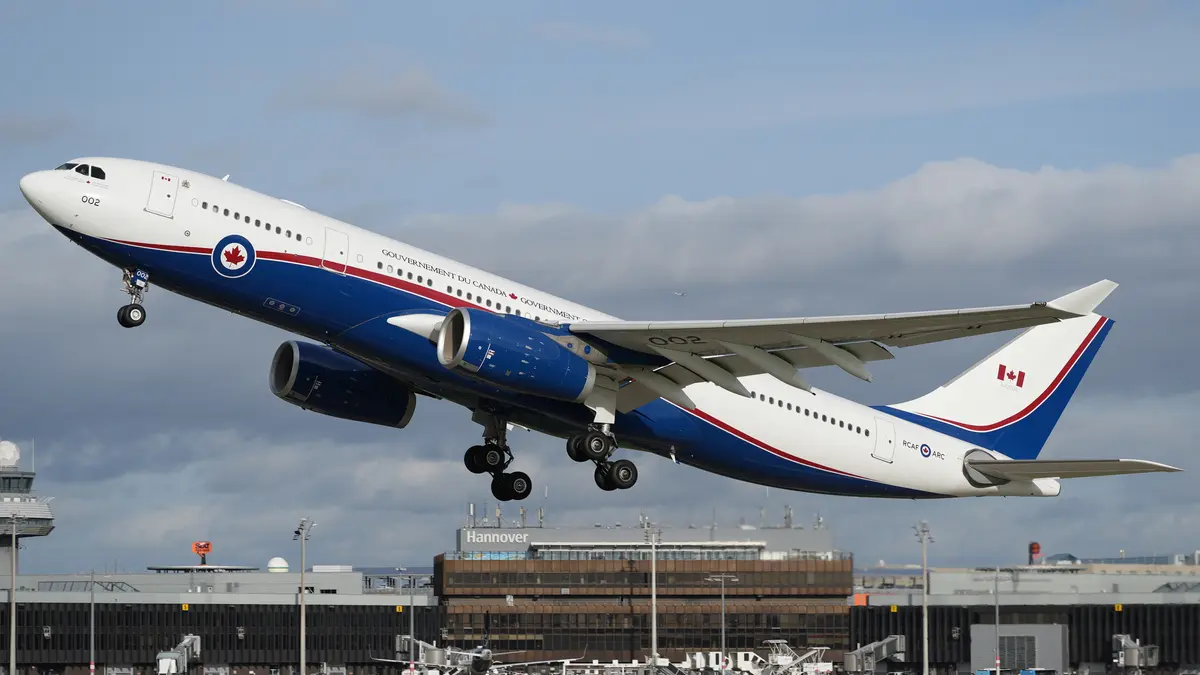

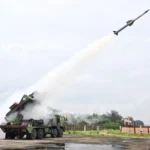
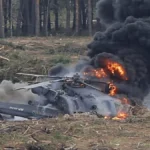
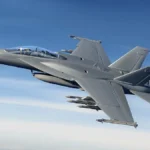
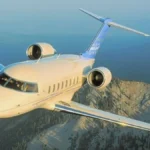


Leave a Reply